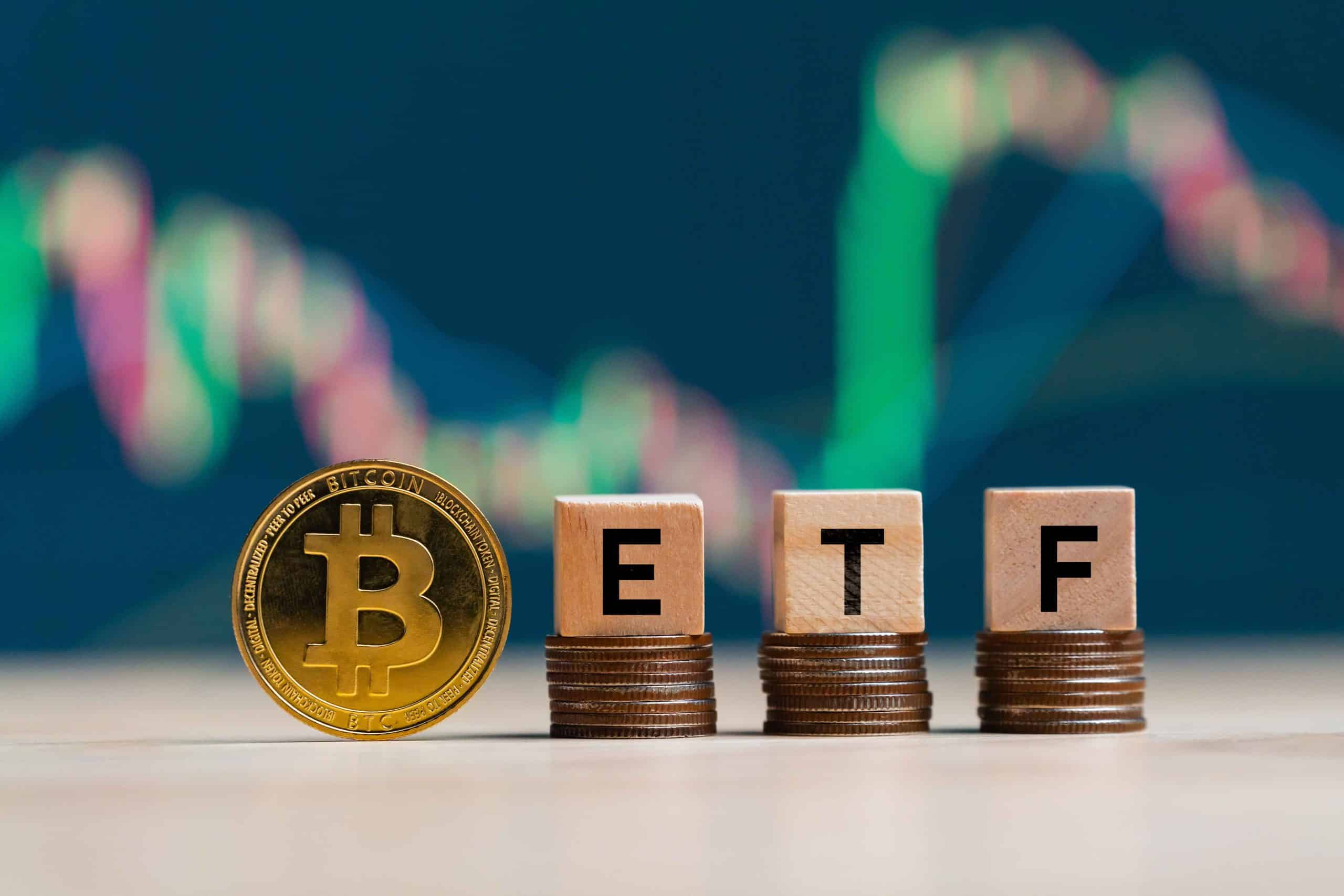Navigating the Complex Regulatory Terrain: A Rollercoaster Year for the Stablecoin Market 👩💼🎢
Moody's Senior Director Yiannis Giokas stated that adoption has increased rapidly this year, despite numerous destabilizing trends.2023 A Crucial Moment for the Global Stablecoin Market
In the thrilling world of cryptocurrency, 2023 has been an exhilarating ride for stablecoins. This year has witnessed unprecedented developments that have not only shaped the future of digital currencies but also transformed the regulatory landscape governing these assets. 🌍💰
The stablecoin market has undergone a metamorphosis, primarily driven by significant advancements in regulation. The United States, being the dominant market for stablecoins, has seen a pivotal moment with the Financial Stability Board’s (FSB) recommendations advocating for comprehensive regulation and oversight of global stablecoin arrangements. These guidelines aim to foster a unified approach to managing stablecoins within the international financial system, ultimately safeguarding global financial stability. 📜✅
However, navigating the regulatory terrain has not been a smooth journey. The G-20 discussions earlier this year exposed differing perspectives, particularly among emerging economies. Concerns about the disruptive potential of stablecoins on sovereign monetary policies have led to calls for stringent regulatory frameworks that balance financial innovation with national economic safeguards. In response to these concerns, the G20 adopted a crypto roadmap to establish a global policy framework for crypto assets, including stablecoins, taking into account implications for emerging markets. 🌐🏛️
Beyond the G20, other countries are also taking decisive actions. In the United Kingdom, the Financial Conduct Authority (FCA) and the Bank of England (BoE) are working towards finalizing stablecoin regulations by 2025, demonstrating their commitment to safely integrating stablecoins into the financial ecosystem. Similarly, the European Union’s Markets in Crypto Assets (MiCA) regulation sets a high benchmark for stablecoin oversight, with specific capital and liquidity requirements for issuers. The United States is also taking legislative strides with various proposals to regulate stablecoins, positioning Japan ahead of other jurisdictions with a comprehensive stablecoin regulatory framework. Singapore’s Monetary Authority of Singapore (MAS) has finalized its framework for single currency stablecoins, while Hong Kong is preparing to introduce its regulatory framework by the end of 2024. 🇬🇧🇪🇺🇺🇸🇯🇵🇸🇬🇭🇰
- Solana (SOL): From Hype to Hotness – A Rollercoaster Ride for Crypto Fans 🎢💰
- Bitcoin’s Future in 2024 What’s in Store for the Cryptocurrency?
- Crypto in 2024: Building Trust and Embracing Growth
Now, let’s fasten our seatbelts and brace ourselves for a tumultuous year in the stablecoin market. The ride began with the announcement that U.S.-dollar backed Binance-branded BUSD would no longer be minted or supported beyond 2023. This revelation launched a quest for reliable alternatives. Just when the industry thought the rollercoaster couldn’t be any more thrilling, major stablecoins such as USDC and DAI experienced de-pegging events during a banking crisis in March, sending shockwaves through the market and raising concerns about their reliability. Amidst regulatory and transparency challenges, Binance’s endorsement of trueUSD (TUSD) and tether (USDT) as “trusted” stablecoins marked significant moments in the market’s evolution. 🎢🤯
But the excitement doesn’t stop there! According to a report published by Moody’s Analytics, large fiat-backed stablecoins depegged over 600 times in 2023, further illustrating the volatility in the market. 📊💥
While navigating this thrilling rollercoaster, stablecoins are not just attracting attention from thrill-seekers but also from mainstream financial giants. Major companies like Visa, Mastercard, and Checkout.com have embraced stablecoins for various applications. Visa has expanded its stablecoin settlement capabilities and initiated pilot programs with Circle’s USDC using the Solana blockchain. Mastercard has partnered with Immersve to enable crypto payments in New Zealand and Australia. At the same time, Checkout.com has launched a stablecoin settlement solution, offering merchants 24/7 settlement flexibility, even on weekends and holidays. It seems like stablecoins are becoming the VIPs of the digital currency world, gaining access to exclusive events and even skipping the line at crowded supermarkets! 💳💎🛒
Now, let’s look into the crystal ball and peer into the future. As we venture through 2023, it becomes evident that the stablecoin market is at a crucial juncture. Regulatory landscapes across the globe reflect a concerted effort to safely integrate stablecoins into the financial system. While these regulatory efforts vary in approach and scope, they share a common goal: harnessing the potential of stablecoins while mitigating associated risks. It’s like installing seat belts and safety bars on this exhilarating rollercoaster ride to ensure everyone has a thrilling yet secure experience! 🚀🎢🔒
Despite the challenges faced and the market fluctuations experienced, the stablecoin market has demonstrated resilience and adaptability. The evolution of stablecoins seems to be leaning towards enhanced regulatory compliance and a gradual shift towards more transparent, decentralized models. This promises a more secure and stable future for this crucial sector of the crypto economy. So, hold on tight, because stablecoins are steering their way toward maturity and wider adoption. 📈🚀
Looking ahead to 2024, stablecoin issuers would be wise to focus on transparency, risk management, and implementing proper controls to enhance trust and safeguards around the redemption process. By doing so, they can solidify their position in the market and further strengthen the integrity of stablecoin operations. It’s like installing airbags and maintenance checks on the rollercoaster, ensuring a safe and enjoyable journey for all! 💪🛡️
Now, let’s address some burning questions you might have:
Q: How do stablecoins impact global financial stability?
Stablecoins, with their potential to bridge traditional finance and the digital world, have raised concerns about their impact on global financial stability. The Financial Stability Board (FSB) has recognized this and recommended comprehensive regulation and oversight of global stablecoin arrangements to mitigate associated risks. The international regulatory efforts aim to strike a balance between fostering financial innovation and maintaining stability within the financial system.
Q: What are the potential benefits of stablecoins in emerging markets?
Stablecoins can offer several advantages in emerging markets, such as financial inclusion, cross-border remittances, and the reduction of transaction costs. However, concerns about their disruptive potential on sovereign monetary policies have led to calls for strict regulation. Regulatory frameworks need to address these concerns while enabling the benefits of stablecoins to be realized in emerging markets.
Q: How are stablecoins being integrated into mainstream finance?
Major companies like Visa, Mastercard, and Checkout.com have embraced stablecoins for various financial operations. Visa has expanded its settlement capabilities with stablecoins, while Mastercard has collaborated with Immersve for crypto payments. Checkout.com offers stablecoin settlement solutions, providing merchants with greater flexibility in their payment processes. The adoption of stablecoins by these mainstream financial players reflects their recognition of the potential benefits and growing importance of stablecoins in the broader financial landscape.
Q: Are stablecoins a safe investment?
Stablecoins, as their name suggests, aim to maintain a stable value relative to a specific asset or basket of assets. While they generally carry a lower risk compared to other cryptocurrencies, it’s essential to consider factors such as regulatory compliance, transparency, and the stability of the underlying assets when evaluating the safety of a stablecoin. Investors should conduct thorough research and due diligence before considering stablecoins as an investment option.
Q: What can we expect for the future of stablecoins?
Based on the current trends and developments, it’s apparent that stablecoins will play an increasingly integral role in the broader financial landscape. Regulatory efforts to integrate stablecoins safely indicate their growing importance and potential for continued growth and innovation. As the market matures, we anticipate a shift towards more transparent, decentralized models. This alignment with regulations and increased transparency will provide a secure foundation for the future expansion and adoption of stablecoins.
So, as we buckle up and prepare for the wild ride that lies ahead, let’s embrace the potential of stablecoins with a mix of excitement and caution. Feel free to share this thrilling journey with your friends and fellow crypto enthusiasts on social media! 📲📣
🔗 Reference Links: – Moody’s Analytics – Report on Large Fiat-Backed Stablecoin Depegging
We will continue to update Blocking; if you have any questions or suggestions, please contact us!
Was this article helpful?
93 out of 132 found this helpful
Related articles
- Meme It is not only a speculative target for gold, but also the foundation of encrypted social infrastructure.
- Bitcoin Block Size: Where Bytes Matter and Money Talks
- Bringing Bad Actors to Justice: A Roller Coaster Ride in the Crypto World
- The Tokenization Revolution: A Humorous Take on the Future of Digital Assets
- LD Capital Macro Weekly Report (12.18) Powell’s unexpectedly dovish stance triggers a radical repricing in the market
- TVL is growing rapidly, community activities are ongoing, will the Sui ecosystem experience an explosion?
- This USDT is not the same USDT






